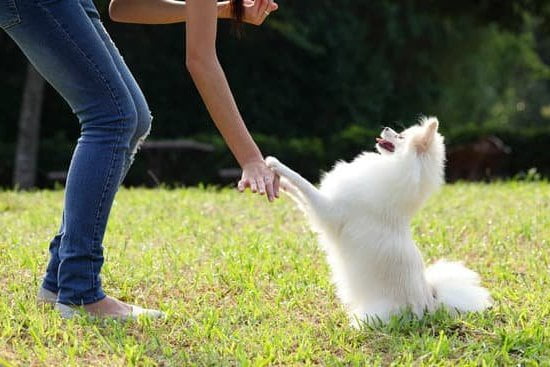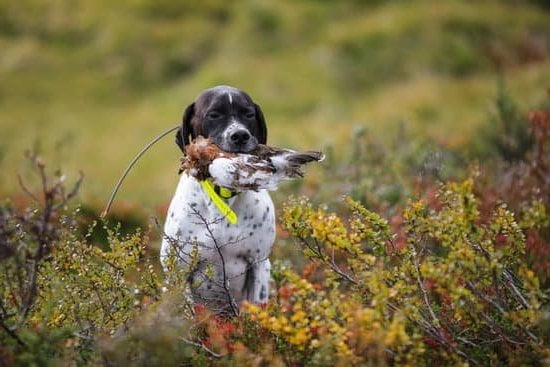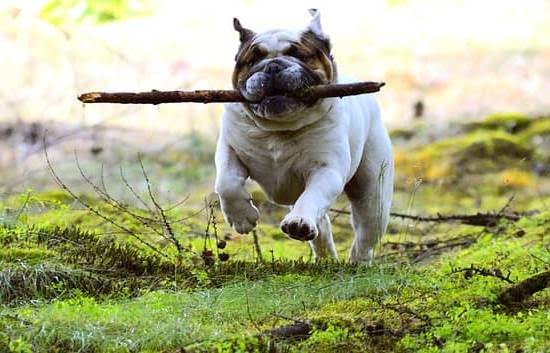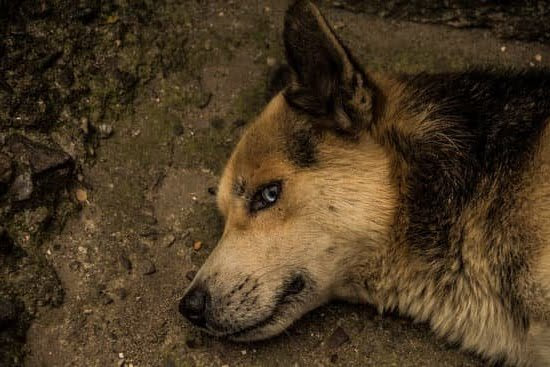Dogs are known for their unique behaviors and instincts, including their tendency to chase after small animals such as cats. Many dog owners have wondered, “Can dogs be trained not to chase cats?” This article will explore the natural instinct of dogs to chase after prey, and provide insights into whether this behavior can be modified through training.
Understanding the prey drive in dogs is essential when addressing the issue of chasing cats. This instinct is deeply rooted in their genetic makeup, as dogs have been naturally bred for hunting and capturing prey. However, with proper socialization and training, it is possible to modify this behavior and foster peaceful coexistence between dogs and cats.
Proper socialization plays a crucial role in shaping a dog’s behavior towards other animals. It helps them develop positive associations with cats and understand that they are not targets for hunting. By employing positive reinforcement training techniques and using the right tools and equipment, dog owners can work towards teaching their pets to resist the urge to chase after feline companions.
Understanding the Prey Drive in Dogs
Dogs are natural hunters and their prey drive is instinctual. This drive is deeply rooted in their genetic makeup, as dogs were originally bred for hunting and herding purposes. The prey drive is the motivation to pursue and capture prey, which can include anything from small animals to toys or even moving objects. Understanding this instinctual behavior is crucial when it comes to training a dog not to chase cats.
The level of prey drive can vary between breeds and individual dogs. It’s important for dog owners to recognize and acknowledge this innate behavior in their pets. By understanding the prey drive, owners can take appropriate steps to manage and train their dogs in a way that ensures the safety and harmony of all pets within the household.
Recognizing signs of a heightened prey drive in a dog is essential for successful training. Behaviors such as intense focus, fixation, stalking, lunging, or chasing should be addressed early on through proper training techniques. Through positive reinforcement methods and consistent training, it is possible to modify this instinctual behavior and teach dogs to coexist peacefully with other animals, such as cats.
The Importance of Proper Socialization
Socialization plays a crucial role in determining how a dog interacts with other animals, including cats. Proper socialization from a young age helps dogs learn appropriate behavior and develop positive associations with other pets. Dogs that are not adequately socialized may exhibit fearful or aggressive behavior towards cats, leading to chasing or confrontations.
Early Exposure to Cats
One way to help your dog become comfortable around cats is by exposing them to felines at an early age. This can be done by introducing them to well-behaved and calm cats in a controlled environment. Through positive experiences, such as supervised interactions and play sessions, dogs can learn that cats are not a threat and can even become friends.
Positive Reinforcement During Socialization
During the socialization process, it’s important to use positive reinforcement techniques to encourage desirable behavior. When your dog shows calm and non-threatening behavior around cats, be sure to reward them with treats, praise, or toys. This helps create positive associations with the presence of cats and reinforces the idea that being near them is a good experience.
By focusing on proper socialization and using positive reinforcement methods, dog owners can greatly increase the chances of their pets getting along with feline companions. It’s essential to be patient and consistent during the socialization process, as it may take time for some dogs to adjust and feel comfortable around cats. With dedication and effort, many dogs can successfully learn not to chase or exhibit aggression towards their cat counterparts.
Positive Reinforcement Training Techniques
When it comes to teaching a dog not to chase cats, positive reinforcement training techniques can be highly effective. This type of training focuses on rewarding desirable behavior rather than punishing unwanted behavior. By using positive reinforcement, you can help your dog understand that ignoring the urge to chase cats is preferred and will result in a reward.
Use of Treats and Toys
One of the most common positive reinforcement techniques is using treats and toys to reward your dog for good behavior. Whenever your dog shows restraint or ignores the temptation to chase a cat, immediately reward them with a treat or playtime with their favorite toy. Over time, they will learn to associate resisting the urge to chase with receiving something they love.
Clicker Training
Clicker training is another effective method for teaching dogs not to chase cats. The clicker is used as a signal to indicate when your dog has done something right, followed by a reward. With consistent use of the clicker and rewards, your dog will learn that refraining from chasing cats leads to positive consequences.
Verbal Praise and Affection
In addition to treats and toys, verbal praise and affection are important forms of positive reinforcement. When your dog chooses not to chase a cat, be sure to shower them with verbal praise such as “good boy/girl” or some petting and cuddles. This form of positive reinforcement helps strengthen the bond between you and your dog while reinforcing desirable behavior.
Tools and Equipment for Training
When it comes to training your dog not to chase cats, having the right tools and equipment can make a significant difference in the success of your efforts. One essential tool is a sturdy, comfortable harness that allows you to have better control over your dog during training sessions. A harness with a front clip design can also help deter pulling and allow you to redirect your dog’s attention more effectively.
Another important piece of equipment is a long leash, ideally ranging from 15-30 feet in length. This will give your dog the freedom to move around during training while still allowing you to maintain control. Long leashes are especially useful for teaching recall and practicing obedience commands in distracting environments such as around other animals.
For positive reinforcement training, high-value treats are indispensable. These treats should be particularly enticing to your dog and reserved exclusively for training sessions. Quality treats can serve as powerful motivators and rewards for good behavior, helping to create lasting associations between obeying commands and receiving a delicious treat.
Lastly, consider utilizing interactive toys or puzzle feeders as additional tools for mental stimulation and engagement during training. These items can help keep your dog focused and entertained while learning important lessons about impulse control and socialization.
| Training Tool | Purpose |
|---|---|
| Harness | Better control and redirection during training sessions |
| Long Leash | Freedom of movement while maintaining control |
| High-Value Treats | Motivation and reward for good behavior |
| Interactive Toys/Puzzle Feeders | Mental stimulation & engagement during training sessions |
Steps to Train Your Dog Not to Chase Cats
Training a dog not to chase cats can be a challenging but rewarding endeavor. The first step in training your dog not to chase cats is to understand that the behavior of chasing cats is a natural instinct for dogs. By understanding this, you can approach the training process with empathy and patience.
The most effective way to train your dog not to chase cats is through positive reinforcement techniques. This involves rewarding your dog for good behavior, such as ignoring a cat, with treats, praise, or playtime. Positive reinforcement creates a strong association between good behavior and rewards, making it more likely that your dog will choose to ignore the urge to chase a cat in the future.
One important tool for training your dog not to chase cats is a well-fitted harness or leash. Using these tools can help you control your dog’s movements and prevent them from chasing after a cat during training sessions. It’s also important to create a safe and controlled environment for training, where you can gradually expose your dog to cats while maintaining their focus on you and following commands.
Addressing Behavioral Issues and Challenges
When it comes to training a dog not to chase cats, there can be various behavioral issues and challenges along the way. It’s important to address these issues in order to effectively train your dog to live peacefully with cats. Some common behavioral challenges that may arise include:
- Aggression towards cats
- Excitability when seeing a cat
- Inability to focus or listen when a cat is present
One of the key ways to address these behavioral issues is through professional guidance from a certified dog trainer or behaviorist. They can assess your dog’s specific behavior and provide tailored techniques and strategies to help overcome any challenges.
In addition, consistency in training is crucial. Dogs thrive on routine and clear expectations, so it’s important to maintain a consistent approach when addressing behavioral issues. This includes using positive reinforcement techniques consistently, setting clear boundaries, and providing ongoing training and guidance for your dog.
Lastly, it’s essential to have patience throughout the training process. Addressing behavioral challenges takes time, effort, and understanding. Every dog is unique, so it’s important to remain patient and persistent as you work through any difficulties in training your dog not to chase cats. With the right approach, many dogs can learn to coexist peacefully with their feline counterparts.
Maintaining Consistency and Patience
Training a dog not to chase cats requires consistent effort and patience. It is important for dog owners to understand that changing a dog’s behavior takes time and dedication. Here are some tips on maintaining consistency and patience throughout the training process:
1. Establish clear rules: Set clear boundaries for your dog when it comes to interacting with cats. Consistency in enforcing these rules will help your dog understand what behavior is expected from them.
2. Regular training sessions: Schedule regular training sessions with your dog to reinforce positive behaviors and discourage chasing instincts. Consistent repetition will help your dog understand the desired behavior more effectively.
3. Positive reinforcement: Use positive reinforcement techniques such as treats, praise, and rewards to motivate your dog to exhibit the desired behavior. Be patient and consistent in rewarding good behavior, as this will help your dog associate the behavior with a positive outcome.
4. Avoid punishment: Punishing a dog for chasing cats can have negative consequences and may worsen their behavior. Instead of punishment, focus on redirecting their attention towards more appropriate activities through consistent training and positive reinforcement.
By maintaining consistency and patience throughout the training process, you can effectively teach your dog not to chase cats while strengthening the bond between pets in your household. Remember that every dog is unique, so it may take time for some dogs to fully grasp the concept of living peacefully with their feline counterparts.
Conclusion
In conclusion, while it may be challenging to train a dog not to chase cats due to their natural prey drive, with understanding, patience, and consistent positive reinforcement training techniques, it is possible for dogs and cats to live together harmoniously. Proper socialization from a young age is crucial in helping dogs learn the appropriate behavior around cats.
It is important for pet owners to recognize the importance of creating a safe and peaceful environment for both their canine and feline companions.
Moreover, addressing any behavioral issues or challenges that arise during the training process is essential. This may require seeking the assistance of professional trainers or behaviorists who can provide guidance and support. By maintaining consistency in training methods and showing patience towards our furry friends, we can help them coexist peacefully.
Ultimately, living in harmony with both dogs and cats requires dedication from pet owners. It is important to create a positive environment where both pets feel secure and respected. With proper training, understanding of natural instincts, and love from their human companions, dogs can be taught not to chase cats, allowing for a peaceful cohabitation between these beloved pets.
Frequently Asked Questions
Can Dogs Be Trained to Be Cat Friendly?
Dogs can be trained to be cat-friendly through a process of gradual socialization and positive reinforcement. Start by exposing the dog to the scent of the cat, then gradually introduce visual and physical contact in a controlled environment. Reward the dog for calm and non-aggressive behavior around the cat, and consistently reinforce this behavior through training exercises.
How Do I Train My Dog to Leave the Cat Alone?
Training a dog to leave the cat alone requires firm but gentle discipline. Use commands like “leave it” or “no” to redirect the dog’s attention away from the cat when it starts showing unwanted behavior.
Also, provide plenty of mental and physical stimulation for your dog to keep its energy levels in check, reducing its desire for chasing or bothering the cat.
How Do You Desensitize a Dog to a Cat?
Desensitizing a dog to a cat involves gradually exposing them to each other in a controlled and supervised environment. Begin by keeping them apart but allowing them to see, hear, and smell each other from a safe distance. Over time, decrease the distance between them as long as both animals remain calm and non-threatening.
Use positive reinforcement such as treats or praise to create positive associations with being near each other. It’s important to monitor their interactions closely and intervene if either animal shows signs of distress or aggression.

Welcome to the blog! I am a professional dog trainer and have been working with dogs for many years. In this blog, I will be discussing various topics related to dog training, including tips, tricks, and advice. I hope you find this information helpful and informative. Thanks for reading!





